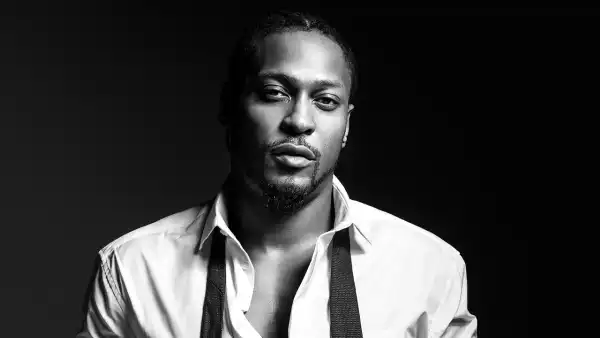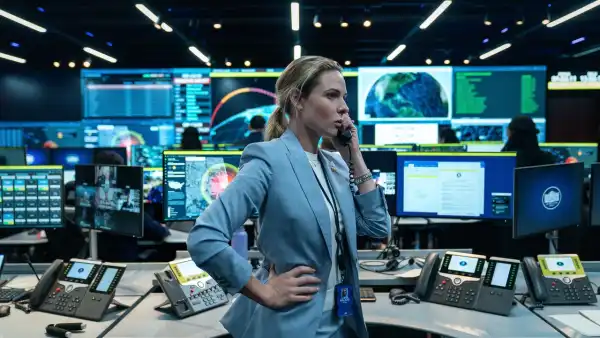
Save this storySave this storySave this storySave this story
If we had our druthers, celebrities would kindly cast themselves in amber. Stray too far, too fast from the looks that made them famous and they’re likely to be slapped with a charge: “unrecognizable,” a judgment that, like any other, betrays much about the beholder. We assign the term less often to those who dare to age than to those who go to conspicuous lengths to avoid doing so. In the Olympic spectatorship of modern star worship, “unrecognizable” reflects the tenacious belief that public faces are public property.
One of those public faces, that of the thirty-six-year-old actor Zac Efron, has been dogged by accusations of unrecognizability since 2021, when fans noted a conspicuous change in his jawline. Transforming from boyish to Cro-Magnon seemingly overnight, he was accused of having undergone something more than the natural maturing of a once-upon-a-time Disney star—a surgical intervention, perhaps. Vanity had exacted a price on our boy, and we weren’t going to let his altered visage go unexplained. Last fall, Efron finally addressed “jaw-gate,” telling Men’s Health that he’d slipped and shattered his jaw back in 2013, causing certain muscles in his face to overcompensate. “The masseters just grew,” he said. Whatever could be made of that tale, the new face—his face—was here to stay.
Efron has been in a couple of projects since, but it is only with his recent turn in Sean Durkin’s “The Iron Claw,” in theatres Friday, that the jaw has become a part of his instrument. The film tells the story of a famous Texas pro-wrestling clan called the Von Erichs, following them throughout the eighties and early nineties as they are beset by a sequence of tragedies. The movie is no revelation; it winnows an extraordinary tale down to the expected beats of a conventional sports drama. When and where it does succeed, though, the movie does so based on the poignancy of Efron’s face and body, whose stolid contours weather innumerable punishments both in the ring and in the private sphere of family.
The film opens not with a mandible but with a trapezius, a flashback in black-and-white of the Von Erich patriarch, Fritz (Holt McCallany), in the midst of a match, grunting and colliding with another body in a spotlighted ring. His muscles are strong and capable even as they ripple under the telltale gelatinousness of aging skin. For now, he still has it—showmanship, pizzazz, that thing that makes the crowd holler. The finale of the match comes down to the single, spellbinding move that gives the film its title: one hand, five curved fingers clutching the crown of the opponent’s head as though for dear life. The film then jumps forward, to 1979, when Fritz, who never achieved the title belt of his dreams, now oversees a crop of boys whom he’ll goad into following in his footsteps, whatever the cost. They are an all-American family in an era when the notional security provided by all-American values is seeping away by the barrelful. “Mom tried to protect us with God. Pop tried to protect us with wrestling,” Efron’s character, Kevin, explains in voice-over. “He said if we were the toughest, strongest, nothing could ever hurt us. I believed it. We all did.”
“The Iron Claw” is based on a true story, and if you are familiar with it you know that the tragedy which befell the Von Erich brothers in real life was even greater than what’s depicted onscreen. There were six actual brothers; one was cut from the screenplay for efficiency. At the beginning of the film, only three are present around the kitchen table: Kevin and his brothers David and Michael. Jack, Jr., died in a childhood accident. Kerry (Jeremy Allen White), pop’s favorite, is a collegiate discus thrower poised to make his Olympic début in the 1980 games until Jimmy Carter puts the kibosh on the Games, bringing him home and back into the ring. Kevin is second favorite (this is no secret; the rankings are announced at breakfast), an undoubtedly harder slot to fill. The first among his brothers to wrestle, and the oldest living son, he is the embodiment of his father’s disciplinary mantra, and bears the brunt of his father’s indefatigable pursuit of seeing a Von Erich named N.W.A. World Heavyweight Champion. Kevin’s labors can be measured in rivulets of sweat. While one of his younger brothers David (Harris Dickinson) sleeps in, Kevin sprints across the family’s acreage in a cropped tee and shorts, his mammoth, scissoring arms as propulsive as his pumping thighs.
The work of a sports drama is, in some sense, to transcend the easy marvel of athletes’ physiques in favor of other, deeper stuff, like inner strife and sentiment. But in “Iron Claw” the body is relevant for how it testifies to the hard life of the family’s chosen sport. The three oldest Von Erich sons gain renown wrestling as a team, and for a time they triumph. Travelling across the country to compete, they are Texas fabulous: beef-fed boys in velour and lamé, carousing in tight tanks and tighter denim. Durkin, working with the cinematographer Mátyás Erdély and the costume designer Jennifer Starzyk, wants us to see the body as a hewn product: a vascular, clenching, clothes-busting display. Erdély’s handheld camera chases Kevin’s nimble, ultra-tan form around the ring, catching flashes of heaving muscle and theatrical grimaces framed by He-Man hair.
Pro wrestling, now and then, tends to favor bodies that a blog I used to visit would call “ ’70s big”: “muscular, bouldered . . . yet still pleasing.” Of the Von Erich brothers, Efron’s Kevin is the only one whose form fully fits the bill. (“Oh, my God,” the woman seated next to me in the theatre whispered when he first came onscreen.) There is nothing wrong with the performances of Harris Dickinson, whom I’m enjoying on the Hulu thriller “A Murder at the End of the World,” or of Jeremy Allen White, whose hangdog stare, further weighed down here by a long, shaggy hairdo, lends his character an appropriate sense of foreboding. But their combined pathos doesn’t quite make up for their relatively coltish frames, which lend them a diminished presence under the arena lights, even in moments when the screenplay calls for them to outpace their brother in wrestling fame. The film is an Efron vehicle, to be sure. Kerry, David, and Michael all suffer dark fates, but for an image of pain we look to Kevin—the way his neck veins pop after his opponent performs a suplex on him on a concrete floor, or the way he sets his jaw in mandated stoicism during a family funeral.
Dramatic physical changes are permitted, encouraged, and rewarded if they’re done in the service of a role. In the decade following Efron’s breakout turn, at the age of nineteen, as a jock-turned-theatre-kid in “High School Musical,” he went from twink to twunk, as one does if one is a recovering teen heartthrob. But, with an appearance in the 2017 movie “Baywatch,” he ventured into corporeal extremes. Efron looked, as meatheads would put it, ripped to the bone, with muscles that seemed ready to break free of his sunworshipper’s tan. (He qualified as beefy even alongside his co-star Dwayne Johnson, who is nearly a head taller.) Efron has spoken about the trials of obtaining and maintaining that physique, including taking “powerful diuretics,” overtraining, and suffering from an insomnia that threw him into a depression. In 2020, a Netflix travel series called “Down To Earth with Zac Efron” débuted, and a clip made the rounds showing the actor nearly brought to tears by a bite of pasta. “I’m so happy that I’m eating carbs again,” he said. The tabloids surveilled Efron’s transition into what they rushed to describe as “dad bod,” such that, when pictures from “The Iron Claw” were released, revealing his prodigiously muscled torso, he was deemed “unrecognizable” once again.
But “The Iron Claw” is as much a study of Efron’s face—that face—as his body. In profile or silhouetted or dead-on in closeups, it is the shock absorber of the entire drama. Kevin is not much of a talker; his mouth is shy and his eyes are downcast, and his deficient charisma leads to a demotion in his father’s estimation—to win titles in wrestling, after all, you need more than brawn. When he meets the woman who will become his wife (Pam, played by Lily James), she must prompt him to ask her out. On their date, Pam diagnoses Kevin with “oldest-brother syndrome” before he regretfully informs her that his late oldest brother is frozen in time at the age of six, as though the loss was elemental to his identity. Not that he’ll let it show—his jaw, as counterpoint, remains resolute. “I must have the, uh . . . the second-oldest-brother syndrome,” he says with a small, sad smile.
“Iron Claw” will, I’m sure, invite comparison with Darren Aronofsky’s “The Wrestler,” another film anchored by a star with an altered face. But whatever commonalities there are between Mickey Rourke’s performance in that movie and Efron’s here, the actors’ displays of a wretched physicality are differently framed. Besides the obligatory closeup of an injection to the buttocks and an affinity for eighties rock music, the look and rhythms of the two films are as foreign to each other as Jersey and Texas. “The Wrestler” tracks the plodding minutiae of wrestling in the aftermath of stardom: Rourke’s character, the Ram, pumps his iron in ratty gray sweatsuits and takes a squeeze bottle of peroxide to his stringy locks. There’s an alternating dignity and indignity to the Ram’s life that won’t be resolved by romance, by parenthood, by labor, least of all whatever happens in the ring. All that remains, by the film’s final shot, is an ambivalent wall of sound.
“The Iron Claw” concludes on a restorative image: in lieu of sweat, there are tears. For all that the film puts Kevin through, it does not want to relinquish its exaltation of certain things, namely the family unit, despite its perpetual failures. Tragedy in the movie—the “curse” that is said to haunt the Von Erichs—is the bad luck of bad fathering. The only remedy is a new generation to take another go at it. In the final scene, Kevin’s two sons comfort their father, who has been moved to tears watching them toss the football around, as he once had with his brothers. “Everybody cries,” they reassure their father. It’s just the sort of line that, delivered decades earlier, might have kept Kevin’s brothers intact, the film implies. With his boys’ permission, the brother turned dad finally lets his trembling jaw give way. ♦
Sourse: newyorker.com







